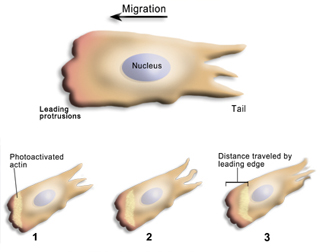Course Description
This course develops and applies scaling laws and the methods of continuum mechanics to biomechanical phenomena over a range of length scales. Topics include: structure of tissues and the molecular basis for macroscopic properties; chemical and electrical effects on mechanical behavior; cell mechanics, motility and …
This course develops and applies scaling laws and the methods of continuum mechanics to biomechanical phenomena over a range of length scales. Topics include: structure of tissues and the molecular basis for macroscopic properties; chemical and electrical effects on mechanical behavior; cell mechanics, motility and adhesion; biomembranes; biomolecular mechanics and molecular motors. Experimental methods for probing structures at the tissue, cellular, and molecular levels will also be investigated.
This course was originally co-developed by Professors Alan Grodzinsky, Roger Kamm, and L. Mahadevan.
Course Info
Learning Resource Types











